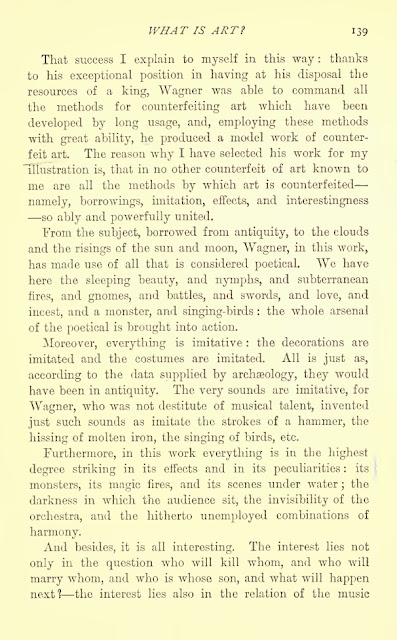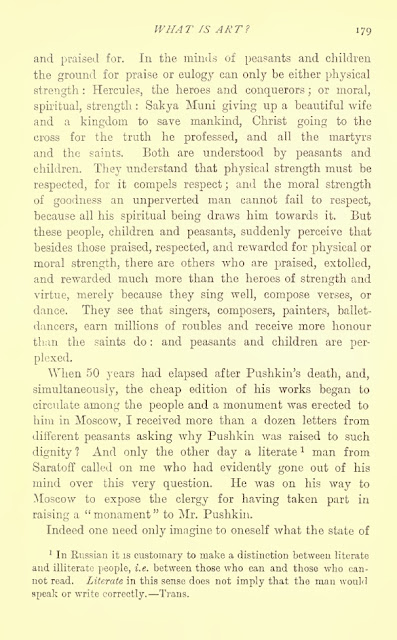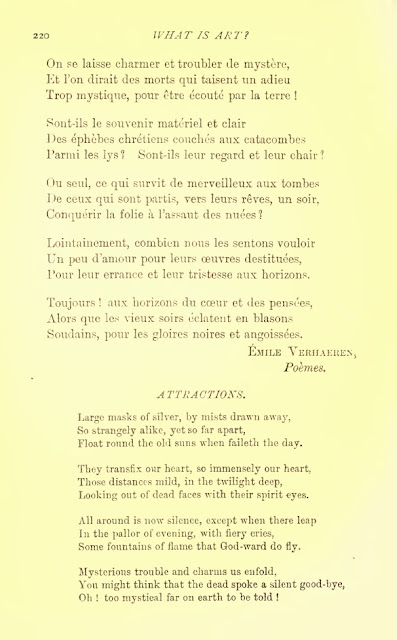
Mona Lisa Sent to Outer Space via Laser
Outer space just got a little more cultured. NASA scientists have successfully beamed an image of the Mona Lisa to its Lunar Reconnaissance Orbiter using a special laser signal, a feat that represents a major leap in laser communication technology, Space.com reports. "This is the first time anyone has achieved one-way laser communication at planetary distances," one researcher said in a statement.
Soon, laser communiqués like this one could serve as backup for traditional radio communication; someday, they could trump radio by transmitting data at higher rates, the researcher said. For the test, NASA broke the Mona Lisa into 150- by 200-pixel sections and beamed them up via laser at about 300 bits per second. The satellite then reassembled the image, applied a pixel-correction method, and sent it back to earth via radio waves. Sure enough, the image transferred correctly.
Shakespeare and every great artist need their own Dark Lady
The unmasking of the Bard’s inspiration confirms that without muses, there’s no art
'Sweet beauty hath no name,” it says in Sonnet 127. Indeed, never mind the name, little is certain about any of Shakespeare’s relationships, beautiful or otherwise. So it is splendid that the bright light of scholarship has now illuminated the Dark Lady, Will’s hitherto frustratingly shadowy muse.
To some, the earlier Sonnets suggest that the poet’s inspiration was a sallow, tight-hosed Ganymede with fluff on his upper lip: the Fair Youth. But recent close reading of the last Sonnets convincingly suggests that Aline, wife of John Florio, translator of Montaigne and “an Englishman in Italiane”, was the stimulus to the greatest poetry ever written. Sweet beauty now hath a name.
Prototype literary muses were Dante’s Beatrice and Petrarch’s Laura: each beautiful and each unavailable, but – despite or because of this – inspiring. Keats’s La Belle Dame Sans Merci was Fanny Brawne, the “minx” whose presence filled him with a mixture of thrilling excitement and dreadful despair.
In the last century, James Joyce had Nora Barnacle, a companion on life’s grand voyage and in more local and fumbling erotic explorations. Scott Fitzgerald’s Zelda drove him to drink: her diaries are included in Tender is the Night. Patti Boyd, who I once met on Chichester station, inspired George Harrison’s Something and Eric Clapton’s Layla, a pop double-first. And without Jane Birkin, we would not have had Serge Gainsbourg breathily singing Je t’aime while entre ses jambes.
Why do we seek a banal ID in the glorious madness of art? One reason is that the randomness of creativity runs contrary to our desire for knowledge and certainty. Over the doors of London’s Warburg Institute, world centre of art historical expertise, Mnemosyne (Memory) is written in Greek. Mnemosyne, the wife of Zeus, was mother of Erato, Terpsichore and Clio, the muses of poetry, dance and history.
Without muses, we have no art. Thus, in recent years, to edge it nearer the status of art, the leaders of fashion have declared themselves enslaved to assorted muses. Yves Saint Laurent had Catherine Deneuve, Paloma Picasso, Marisa Berenson and Loulou de la Falaise. Today, Karl Lagerfeld retains Kate Moss on a museological basis. The dynamics of the bargain are unclear, although gay designers may find aesthetic stimulus where dull heteros would be distracted by lust. More certainly, in fashion, Dark Ladies have become beacons of PR.
The painter’s muse is a modern invention, a necessary element in the evolving narrative of how art is made. Edouard Manet’s scandalous Olympia and Déjeuner sur l’herbe (a version of which will soon be on show at the Royal Academy) feature the superbly naked Victorine Meurent, the artist’s model and long-time companion, who later became a distinguished painter in her own right. A psychologically true portrait of a naked woman in incongruous settings punctured over-inflated French complacency: Meurent was a muse with a message.
And then there was Salvador Dalí. A virgin at his 1934 marriage to Elena Ivanova Diakonova, by the time she was
re-branded “Gala”, Senora Dalí was ready to become a sexual instructress, tormentor, model and muse. Her provocatively naked body is a recurrent Dalí motif. (Not all artists’ muses are women: Francis Bacon met George Dyer, a man of low character, when he was breaking into his studio.)
But the most revealing of modern artist-muse relationships was Andrew Wyeth’s in the quiet Pennsylvania township of Chadds Ford. Here, beginning in 1971, the hyper-realist homespun painter began a series of more than 200 paintings of a woman neighbour. She was Helga Testorf, a convent-educated German immigrant, but evidently uninhibited… as the impressive number of nudes testifies. Neither Wyeth’s wife nor Testorf’s husband was aware of this furtive creative partnership in their own backyard.
Sometimes it works differently. Gerry McGovern is the designer of the award-winning new Range Rover. Earlier in his career, when working on the MG-F, McGovern’s inspiration was Lycra-clad bottoms found wobbling on treadmills in his gym. So McGovern’s muse hath no name, rather a shape, but at least she was human: more often car designers are inspired by dramatic, but inanimate, Fender Stratocasters, Wurlitzers and machine-guns.
Do we understand art any better if we can name (and on some necessary occasions shame) its human source? Does forensic identity matter? Maybe, maybe not. What’s certain is that great poetry and painting, occasionally great novels, are frequently inspired by the creator’s (often) tormented relationship with a powerful woman. Never mind what’s behind every successful man, in front of every great artist is a seductive muse.
What is art? By Leo Tolstoy
"What Is Art?" (Russian: Что такое искусство? [Chto takoye iskusstvo?]; 1897) is an essay by Leo Tolstoy in which he argues against numerous aesthetic theories which define art in terms of the good, truth, and especially beauty. In Tolstoy's opinion, art at the time was corrupt and decadent, and artists had been misled.
According to Tolstoy, art must create a specific emotional link between artist and audience, one that "affects" the viewer. Thus, real art requires the capacity to unite people via communication (clearness and genuineness are therefore crucial values). This aesthetic conception led Tolstoy to widen the criteria of what exactly a work of art is. He believed that the concept of art embraces any human activity in which one emitter, by means of external signs, transmits previously experienced feelings. Tolstoy offers an example of this: a boy that has experienced fear after an encounter with a wolf later relates that experience, infecting the hearers and compelling them to feel the same fear that he had experienced—that is a perfect example of a work of art. As communication, this is good art, because it is clear, it is sincere, and it is singular (focused on one emotion).
However, genuine "infection" is not the only criterion for good art. The good art vs. bad art issue unfolds into two directions. One is the conception that the stronger the infection, the better is the art. The other concerns the subject matter that accompanies this infection, which leads Tolstoy to examine whether the emotional link is a feeling that is worth creating. Good art, he claims, fosters feelings of universal brotherhood. Bad art inhibits such feelings. All good art has a Christian message, because only Christianity teaches an absolute brotherhood of all men. However, this is "Christian" only in a limited meaning of the word. Art produced by artistic elites is almost never good, because the upper class has entirely lost the true core of Christianity.
Furthermore, Tolstoy also believed that art that appeals to the upper class will feature emotions that are peculiar to the concerns of that class. Another problem with a great deal of art is that it reproduces past models, and so it is not properly rooted in a contemporary and sincere expression of the most enlightened cultural ideals of the artist's time and place. To cite one example, ancient Greek art extolled virtues of strength, masculinity, and heroism according to the values derived from its mythology. However, since Christianity does not embrace these values (and in some sense values the opposite, the meek and humble), Tolstoy believes that it is unfitting for people in his society to continue to embrace the Greek tradition of art.
Among other artists, he specifically condemns Wagner and Beethoven as examples of overly cerebral artists, who lack real emotion. Furthermore, Beethoven's Symphony No. 9 cannot claim to be able to "infect" its audience, as it pretends at the feeling of unity and therefore cannot be considered good art.
Subscribe to:
Posts (Atom)
.jpeg)
.jpeg)
.jpeg)
.jpeg)
.jpeg)



























































































































































































































































































